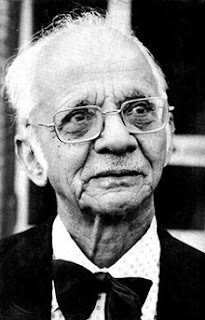A Room Of One's Own by Virginia Woolf
Virginia Woolf's essay A Room of One's Own is a milestone of twentieth-century feminist study. It explores the history of women in literature through an unconventional and largely instigating inquiry of the social and material conditions needed for the writing of literature. These conditions — rest time, seclusion, and financial independence — capitalize all learned output, but they're particularly applicable to understanding the situation of women in the literary tradition because women, historically, have been slightly deprived of those fundamental prerequisites.
In her investigation of this idea, Woolf launches several stimulating sociological and aesthetic reviews. She reviews not only the state of women's literature but also the state of education, both theoretical and literal, concerning women. She also elaborates an aesthetics grounded on the principle of" incandescence, “the ideal state in which everything that's simply particular is consumed in the intensity and truth of one's art.
Woolf, giving a lecture on women and fiction, tells her
audience she isn't sure if the content should be what women are like; the
fiction women write; the fiction written about women or a combination of the
three. Rather, she has come up with “one minor point-- a woman must have money
and a room of her own if she's to write fiction. “She says she'll use a
fictional narrator whom she calls Mary Beton as her alter ego to relate how her
studies on the lecture mingled with her day-to-day life.
A week ago, the narrator crosses a field at the fictional Oxbridge university, tries to enter the library, and passes by the church. She's intercepted at each station and reminded that women aren't allowed to do similar things without accompanying men. She goes to lunch, where the excellent food and comforting atmosphere make for good discussion. Back at Fernham, the women's college where she's staying as a guest, she has a medium banquet. She latterly talks with a friend of hers, Mary Seton, about how men's colleges were funded by kings and independently affluent men, and how finances were raised with difficulty for the women's college. She and Seton denounce their mothers, and their sex, for being so impoverished and leaving their daughters so little. Had they been independently affluent, maybe they could have established fellowships and secured similar luxuries for women. Still, the narrator realizes the obstacles they faced. Entrepreneurship is at odds with child-rearing, and only for the last 48 years have women indeed been allowed to keep the money they earned. The narrator thinks about the effects of wealth and poverty on the mind, about the abundance of males and the poverty of ladies, and the effects of tradition or lack of tradition on the author.
Searching for answers, the narrator explores the British
Museum in London. She finds there are innumerous books written about women by
men, while there are hardly any books by women on men. She selects a dozen
books to try and come up with an answer for why women are poor. Rather, she
locates a multitude of other contents and a contradictory collection of men's
opinions on women. One male professor who writes about the inferiority of women
angers her, and it occurs to her that she has become angry because the
professor has written angrily. Had he written"dispassionately," she'd
have paid further attention to his argument, and not to him. After her outrage
dissipates, she wonders why men are so angry if England is a patriarchal
society in which they've all the power and money. Maybe holding power produces
wrathfulness out of fear that others will take one's power. She posits that
when men express the inferiority of women, they're claiming their superiority.
The narrator believes self-confidence, a demand to get through life, is frequently
attained by considering other people inferior about oneself. Throughout
history, women have served as models of inferiority who enlarge the superiority
of men.
The narrator is
thankful for the heritage left her by her aunt. Before that, she had gotten by
on loathsome, slavish odd jobs available to women before 1918. Now, she reasons
that since nothing can take down her money and security, she need not detest or
enslave herself to any man. She now feels free to" think of things in
themselves", she can judge art, for example, with greater detachment.
The narrator investigates women in Elizabethan England, puzzled why there were no women authors in that rich literary period. She believes there's a deep connection between living conditions and creative works. She reads a history book, learns that women had many rights in the period, and finds no material about middle-class women. She imagines what would have occurred had Shakespeare had an equally blessed sister named Judith. She outlines the possible course of Shakespeare's life grammar school, marriage, and work at a theatre in London. His sister, still, wasn't equal to attending school and her family discouraged her from independent study. She was married against her will as a teenager and ran off to London. The men at a theatre denied her the chance to work and learn the craft. Impregnated by a theatrical man, she committed suicide.
The narrator believes
that no woman of the time would have had a similar genius, "For genius
like Shakespeare's isn't born among labouring, uninstructed, base people."
Nonetheless, some kind of genius must have existed among women also, as it
exists among the working class, although it never translated to paper. The
narrator argues that the difficulties of writing-- especially the disregard of
the world to one's art-- are compounded for women, who are laboriously
disrespected by the male establishment. She says the mind of the artist must
be" incandescent" like Shakespeare's, without any obstacles. She
argues that the reason we know so little about Shakespeare's mind is that his
work filters out his personal" grievances and spites and aversions. “His
absence of particular complaint makes his work" free and unhampered."
The narrator reviews the poetry of several Elizabethan aristocratic ladies and finds that outrage toward men and insecurity mar their writing and prevent intellect from shining through. The writer Aphra Behn marks a turning point for a middle-class woman whose hubby's death forced her to earn her living. Behn's triumph over circumstances surpasses indeed her excellent writing. Behn is the first female writer to have" freedom of the mind." Innumerous 18th-century middle-class female writers and beyond owe a great debt to Behn's breakthrough. The narrator wonders why the four celebrated and divergent 19th-century female novelists George Eliot, Emily and Charlotte Brontë, and Jane Austen-- all wrote novels; as middle-class women, they would have had less privacy and a lesser leaning toward writing poetry or plays, which demand smaller attention. Still, the 19th-century middle-class woman was trained in the art of social observation, and the novel was a natural fit for her aptitudes.
The narrator argues
that traditionally male values and contents in novels similar to war are valued
more than feminine ones, similar to drawing-room character studies. Female
authors, again, are frequently forced to condition their writing to meet the
necessary criticism that their work was insubstantial. Indeed, if they did so
without outrage, they turned off from their original fancies and their books
suffered. The early 19th-century female novelist also had no real tradition
from which to work; they lacked indeed a prose style fit for a woman. The
narrator argues that the novel was the chosen form for these women since it was
a fairly new and pliable medium.
The narrator takes down a recent debut novel called Life's Adventure by Mary Carmichael. Viewing Carmichael as a successor of the female writers she has reflected on, the narrator dissects her book. She finds the prose style uneven, maybe as a rebellion against the" flowery" character of women's writing. She reads on and finds the simple judgment” ‘Chloe liked Olivia.’ “She believes the idea of fellowship between two women is groundbreaking in literature, as women have historically been viewed in literature only about men. By the 19th century, women grew more complex in novels, but the narrator still believes that each gender is limited in its knowledge of the opposite sex. The narrator recognizes that for whatever internal greatness women have, they've not yet made an important mark in the world compared to men. Still, she believes that the great men in history frequently depended on women for supplying them with “some encouragement, some renewal of creative power" that other men could not. She argues that the creativity of men and women is different and that their writing should reflect their differences. The narrator believes Carmichael has important work to do in recording the lives of women, and Carmichael will have to write without anger against men. Also, since everyone has a blind spot about themselves, only women can fill out the portrayal of men in literature. Still, the narrator feels Carmichael is"no further than a clever girl," indeed though she bears no traces of wrathfulness or fear. In a hundred years, the narrator believes, and with money and a room of her own, Carmichael will be a better writer.
The pleasing sight of a man and woman getting into a taxi provokes an idea for the narrator that the mind contains both a manly and female part and for" complete satisfaction and happiness," the two must live in harmony. This combination, she believes, is what poet Samuel Taylor Coleridge described when he said a great mind is" androgynous”. The androgynous mind transmits emotion without impediments. It is naturally creative, incandescent and concentrated." Shakespeare is a fine model of this androgynous mind, though it's harder to find current instances in this “stridently sex-conscious" age. The narrator blames both sexes for bringing about this self-consciousness of gender.
Woolf takes over the speaking voice and responds to two
anticipated criticisms against the narrator. First, she says she deliberately
didn't express an opinion on the relative merits of the two genders--
especially as writers-- since she doesn't believe such a judgment is possible
or desirable. Second, her audience may believe the narrator laid too much
emphasis on material things, and that the mind should be suitable to overcome
poverty and lack of isolation. She cites a professor's argument that of the top
poets of the last century, nearly all were well-educated and rich. Without
material things, she repeats, one cannot have intellectual freedom, and without
intellectual freedom, one cannot write great poetry. Women, who have been poor
since the beginning of time, have understandably not yet written great poetry.
She also responds to the question of why she insists women's writing is
important. As an avid reader, the exorbitantly mannish writing in all classes
has dissatisfied her recently. She encourages her audience to be themselves
and" think of effects in themselves. “She says that Judith Shakespeare
still lives within all women and that if women are given money and privacy in
the coming century, she'll be revived.





































